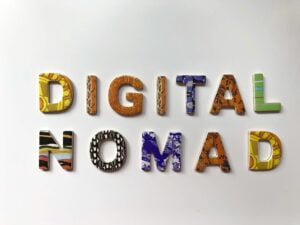Remote Work as a UX/UI Designer
In the digital age, remote work as a UX/UI designer has become an increasingly popular career choice. With companies continuing to shift towards digital platforms, the demand for skilled designers who can work remotely has skyrocketed. This role not only allows professionals to contribute to innovative projects from anywhere in the world, but it also offers the flexibility that many seek in their careers. But what exactly does a UX/UI designer do, and how can you start your journey in this field? This guide will walk you through everything you need to know about remote work as a UX/UI designer, from the skills required to the steps needed to secure your first job.
Understanding the Role of a UX/UI Designer
UX/UI design combines two crucial aspects of product development: user experience (UX) and user interface (UI). Both elements are vital in creating a product that is not only functional but also aesthetically pleasing and easy to use.
1. What is UX Design?
User Experience (UX) design focuses on the overall feel of the product. It’s about understanding the user’s journey—how they interact with a product and ensuring that every step of that journey is smooth and intuitive. A UX designer conducts user research, creates user personas, and designs wireframes and prototypes to address potential pain points in the user experience.
For example, a UX designer working on an e-commerce website would focus on making the purchasing process as seamless as possible, ensuring that users can easily find products, add them to their cart, and complete the checkout process without frustration.
2. What is UI Design?
User Interface (UI) design complements UX by focusing on the visual elements of a product. This includes everything from typography and color schemes to buttons and icons. A UI designer ensures that the product’s interface is visually appealing and aligned with the brand’s identity. They work closely with UX designers to ensure that the visual aspects enhance the overall user experience.
For instance, a UI designer for a mobile app might choose a color palette that is visually engaging and ensures that buttons are easy to click, improving both the app’s aesthetics and usability.
Skills Needed for Remote Work as a UX/UI Designer
To excel in remote work as a UX/UI designer, you need a mix of technical and soft skills. These skills help you not only to design effective and appealing products but also to communicate your ideas effectively with clients and team members.
1. Technical Skills
- Proficiency in Design Tools: Tools like Sketch, Adobe XD, Figma, and InVision are essential for creating wireframes, prototypes, and final designs. Mastering these tools is crucial for any UX/UI designer.
- Understanding of HTML/CSS: While not all UX/UI designers are required to code, having a basic understanding of HTML and CSS can be highly beneficial. It allows you to communicate better with developers and ensures your designs are feasible.
- User Research and Testing: Conducting user research and usability testing are fundamental aspects of UX design. You need to be skilled in creating surveys, conducting interviews, and analyzing user feedback.
- Responsive Design: With users accessing websites and apps on various devices, it’s essential to design interfaces that work seamlessly across different screen sizes.
2. Soft Skills
- Empathy: Understanding the user’s needs and challenges is at the heart of UX design. Empathy allows you to create solutions that truly address user pain points.
- Communication: Whether you’re presenting a design to a client or collaborating with developers, clear and effective communication is key.
- Problem-Solving: UX/UI design is about solving problems. You need to be able to think critically and creatively to find solutions that work for both the user and the business.
- Attention to Detail: The smallest design elements can significantly impact the user experience. Attention to detail ensures that your designs are polished and professional.

Who Hires UX/UI Designers for Remote Work?
UX/UI designers are in demand across a wide range of industries. Companies recognize the importance of user-centered design in creating products that are both functional and enjoyable to use.
1. Tech Companies
Tech companies are among the biggest employers of UX/UI designers. Companies like Google, Apple, and Microsoft are constantly developing new products and services, requiring skilled designers to ensure these offerings meet user needs.
2. Startups
Startups often hire UX/UI designers to help create their initial products. In these environments, designers may have more creative freedom and the opportunity to work on a project from the ground up. However, they may also need to wear multiple hats, taking on both UX and UI tasks.
3. E-commerce Companies
E-commerce businesses rely heavily on UX/UI design to optimize their websites and apps for sales. Designers in this field focus on making the shopping experience as smooth and enjoyable as possible, which directly impacts the company’s revenue.
4. Agencies
Design agencies hire UX/UI designers to work on a variety of projects for different clients. This environment offers the chance to work on diverse projects and develop a broad portfolio. However, it can also be fast-paced and demanding.
How to Get Started with Remote Work as a UX/UI Designer
Breaking into the field of remote UX/UI design requires a combination of education, portfolio development, and networking. Here are the steps you can take to start your career.
1. Education and Training
While some UX/UI designers have formal education in design, many others come from diverse backgrounds. Online courses and bootcamps, such as those offered by Coursera, Udemy, or General Assembly, provide valuable training in UX/UI design. These programs often include hands-on projects that you can add to your portfolio.
2. Build a Strong Portfolio
Your portfolio is your most important asset as a UX/UI designer. It should showcase a variety of projects, highlighting your design process from research to final implementation. Include case studies that explain your approach, the challenges you faced, and the solutions you developed. Tools like Behance and Dribbble are excellent platforms for showcasing your work.
3. Network and Gain Experience
Networking is crucial in the design industry. Join UX/UI design communities on platforms like LinkedIn, Slack, and Twitter to connect with other designers and potential employers. Consider freelancing or taking on small projects to build your experience and portfolio.
4. Apply for Jobs
When you’re ready to start applying for jobs, focus on remote positions if you prefer the flexibility of working from anywhere. Websites like We Work Remotely, Remote OK, and AngelList list remote UX/UI design jobs. Tailor your resume and portfolio to each application, emphasizing the skills and experiences that match the job description.
Earning Potential for Remote UX/UI Designers
The earning potential for UX/UI designers can vary widely depending on experience, location, and the specific industry.
1. Average Salary
According to recent data, the average salary for a UX/UI designer in the United States ranges from $65,000 to $110,000 per year. Entry-level designers can expect to earn around $50,000, while those with more experience or specialized skills can command salaries upwards of $120,000.
2. Freelance Rates
For freelancers, rates can vary even more. UX/UI designers typically charge between $50 and $150 per hour, depending on their experience and the complexity of the project. High-demand designers with a strong portfolio may charge even more.
Ongoing Learning and Development
The field of UX/UI design is constantly evolving, with new tools, trends, and best practices emerging regularly. Staying current with industry developments is crucial for maintaining your skills and advancing your career.
1. Continuous Education
Take advantage of online resources and courses to keep your skills up-to-date. Platforms like Interaction Design Foundation offer courses on advanced UX/UI topics, ensuring you stay ahead of the curve.
2. Attend Conferences and Workshops
Attending design conferences and workshops is another excellent way to learn about the latest trends and network with other professionals. Events like UX Week and Awwwards Conferences provide valuable insights and opportunities to connect with industry leaders.
A Career That Combines Creativity and Technology
Working in remote work as a UX/UI designer offers a unique opportunity to combine creativity with technology, designing products that make a real difference in people’s lives. Whether you’re just starting or looking to advance your career, understanding the ins and outs of this profession is key to success.













